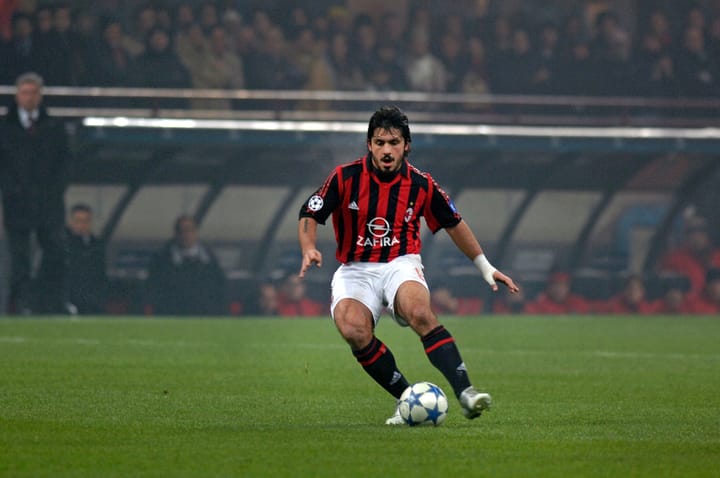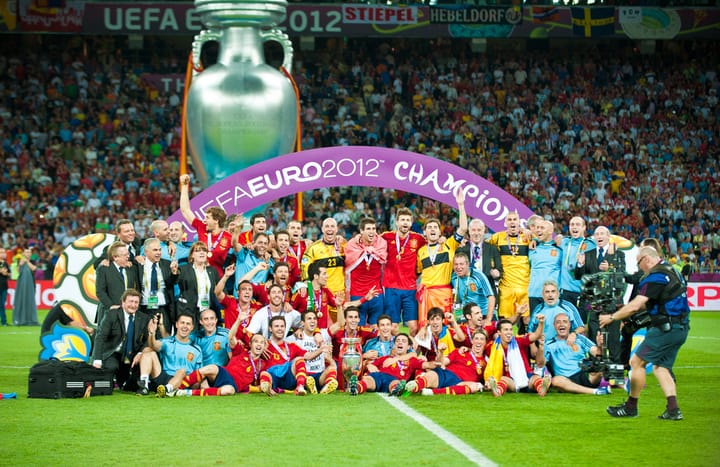Unleashing the Evolution of Soccer Boots: From Kings to GOATs
Curious about the specific milestones in soccer boot history? Let's dive into a timeline that chronicles the journey from the origins to the future.
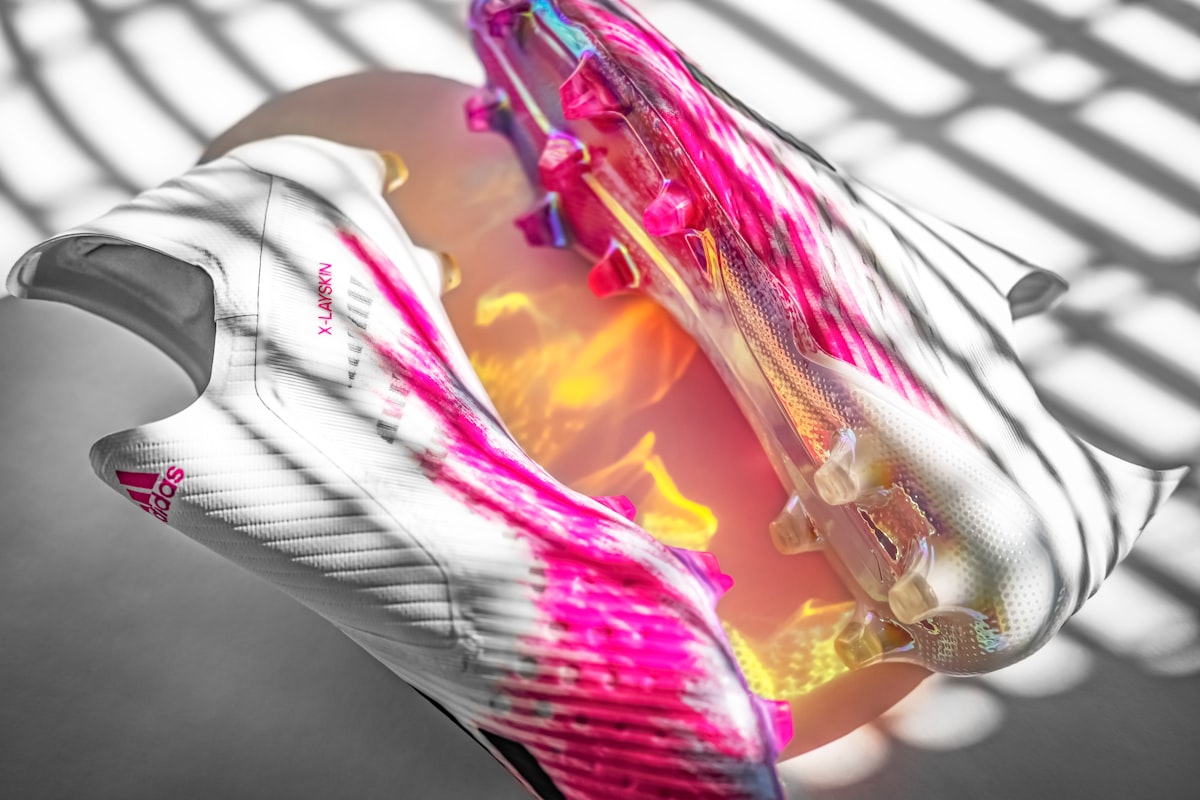
Soccer shoes, also known as football boots, are specifically designed footwear that plays a crucial role in the performance and safety of soccer players.
Since childhood, I have been fascinated by footwear; the leather, the studded sole, the fit. From my first earned money as a newspaper delivery boy, I bought gorgeous, comfortable shoes made of kangaroo leather. Brand: Pony. Type: Rob Rensenbrink Super. They were pretty pricey, about 300 guilders, but entirely worth the investment at the time.
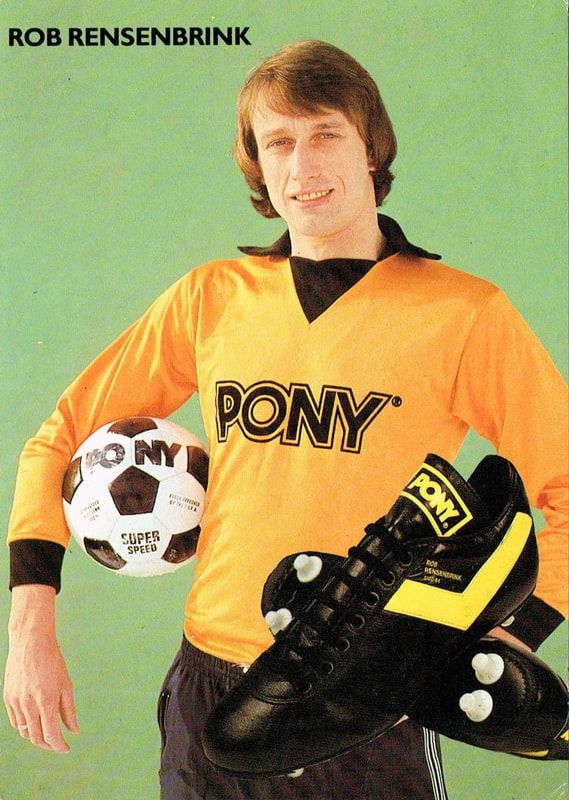
It helped that Rob Rensenbrink was one of my favorite players. His technique was unmatched. As a left winger, he fooled right-wing defenders on the square meter. With his shoes on my feet, I would become at least as technical and outduel any opponent. I wore them for 1 match and did indeed outplay the left-wing attacker. The guy got his revenge. When I got home, it turned out that my shoes had been worked on with a knife. They had been cut in half while I was celebrating victory in the canteen, and my bag was waiting for me outside.
I had no money for new ones and just put on my worn-out Adidas shoes again and immediately noticed the difference.
This is why proper shoes are so important:
1. Traction and Grip
Soccer shoes are designed with specialized studs or cleats on the sole that provide traction and grip on the playing surface, such as grass or artificial turf. These studs prevent players from slipping and provide stability, enabling them to move quickly, change direction, and accelerate without losing balance.
2. Ball Control
Soccer shoes have features that enhance ball control. The shoe's upper part is typically made of leather or synthetic materials that provide a good touch and feel of the ball. The design and texture of the shoe's surface can help players better manipulate the ball and improve their dribbling, passing, and shooting accuracy.
3. Protection
Soccer shoes offer protection to the players' feet. The boots provide a layer of padding and support to reduce the impact of kicks, tackles, and other physical contact during the game. They also help protect against turf burns, cuts, and abrasions.
4. Injury Prevention
Wearing proper soccer shoes can help prevent specific injuries. The studs' traction helps reduce the risk of slipping and falling, which can lead to ankle sprains or other damages. The shoes' design also often incorporates features that offer ankle support and stability, reducing the likelihood of ankle rolls or twists.
5. Adaptation to Different Playing Surfaces
Soccer shoes come in various configurations to suit different playing surfaces. For example, there are shoes with firm ground (FG) studs for natural grass fields, soft ground (SG) studs for wet or muddy conditions, and artificial floor (AG) studs for artificial turf. Using the appropriate shoe for the specific playing surface can enhance performance and reduce the risk of injury.
Keep the ball rolling: World Cup Legacies: The (His)Story of Official Match Balls.
Soccer boots have come a long way since their humble beginnings in the 16th century. Our story began in 1526 when King Henry VIII of England commissioned the first recorded football boots.
Studsboots.wordpress.com writes: According to the records, he ordered a pair from the Great Wardrobe in 1526. He paid 4 shillings for them, which in today's prices would cost approximately £140, not a bad price for leather back then.
There is not much more known about Henry's passion for soccer, and somewhat surprising he would take up the pastime as it was certainly not a gentleman's sport. At the time, the game that would today be considered soccer had few rules and many fouls. Over the next few hundred years, the boot developed, and more and more workers took up the game, and with that came the factory worker's leather boot with high laces. To get a playing advantage, the worker's boot evolved to include nails in the bottom to help with traction and no doubt serve as a warning to other players trying to steal the ball away.
Back then, regulations dictated that nothing should protrude from the shoes, limiting players' maneuverability. However, a revision in 1891 marked a pivotal moment, introducing small studs or bars that provided better grip and traction. This innovation birthed the modern football boot as we know it.
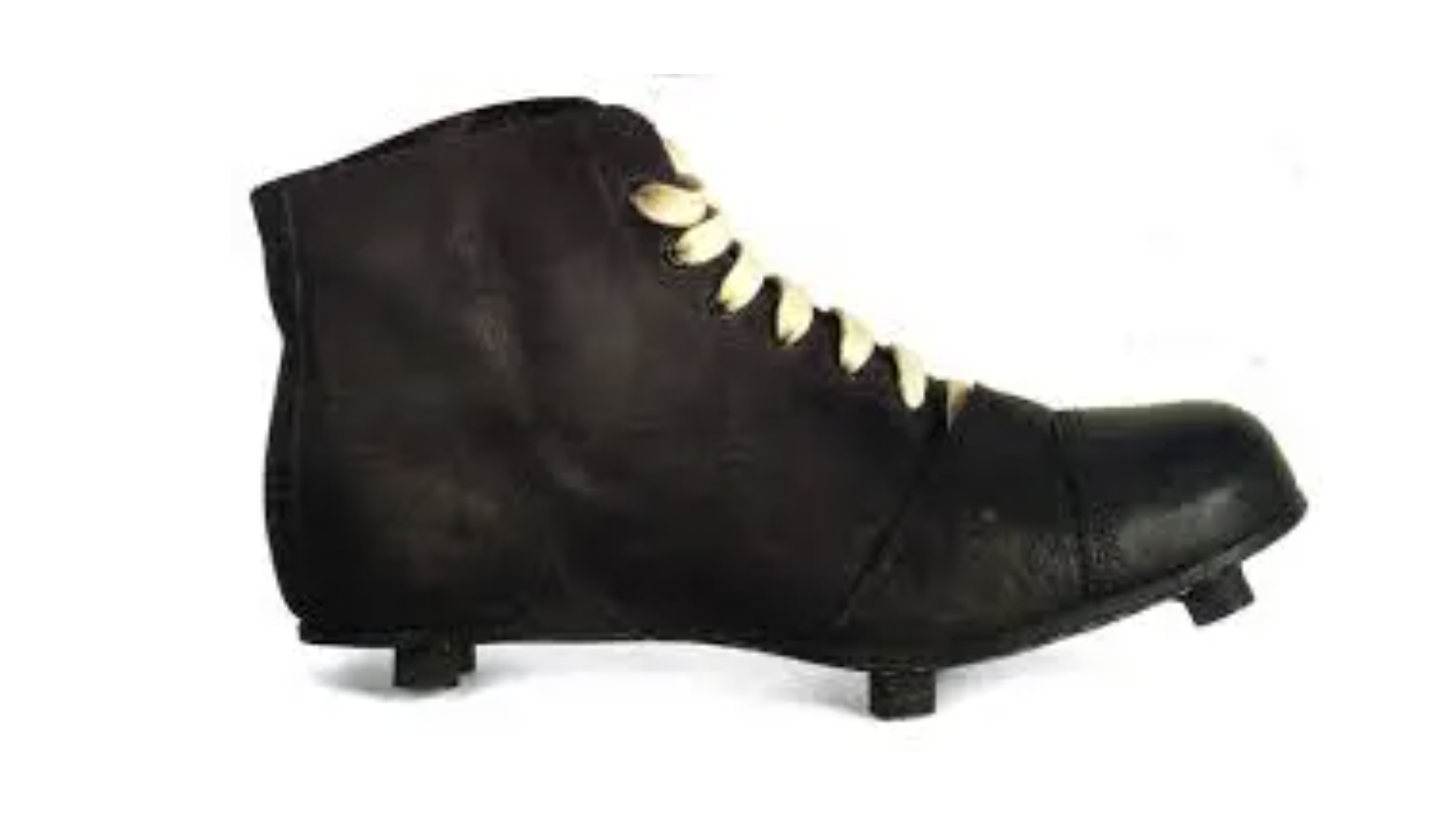
The 1800s
Football boots in this period were far from ideal. Players often wear heavy work boots not designed for running or kicking. Steel caps on these boots posed a painful hazard, especially during tackles. Eventually, metal tacks or studs were added to enhance grip, providing players with stability. The first official football boots made from leather also emerged, but they were thick, heavy, and reached up to the ankles. Wet conditions only worsened the burden, as they doubled the weight of the boots.
This resulted in the English Football Association's implementation of Rule #13 in 1863, which stated, "No one wearing projecting nails, iron plates, or gutta-percha on the soles of his boots is allowed to play." (Gutta-percha is a hard latex-like substance from tree sap used in early golf balls.)
Leather studs began to make an appearance in the late 1880s. The Football Association incorporated the wearing of studs into the rulebook in 1891. The rule stated that studs must be "made of leather and not project more than half an inch, their fastenings must be driven in flush with leather."
1920-1940
The world wars dominated this period, keeping football boots relatively unchanged. Brands like Valsport and Gola (known initially as Bozeat) gained popularity during this era.
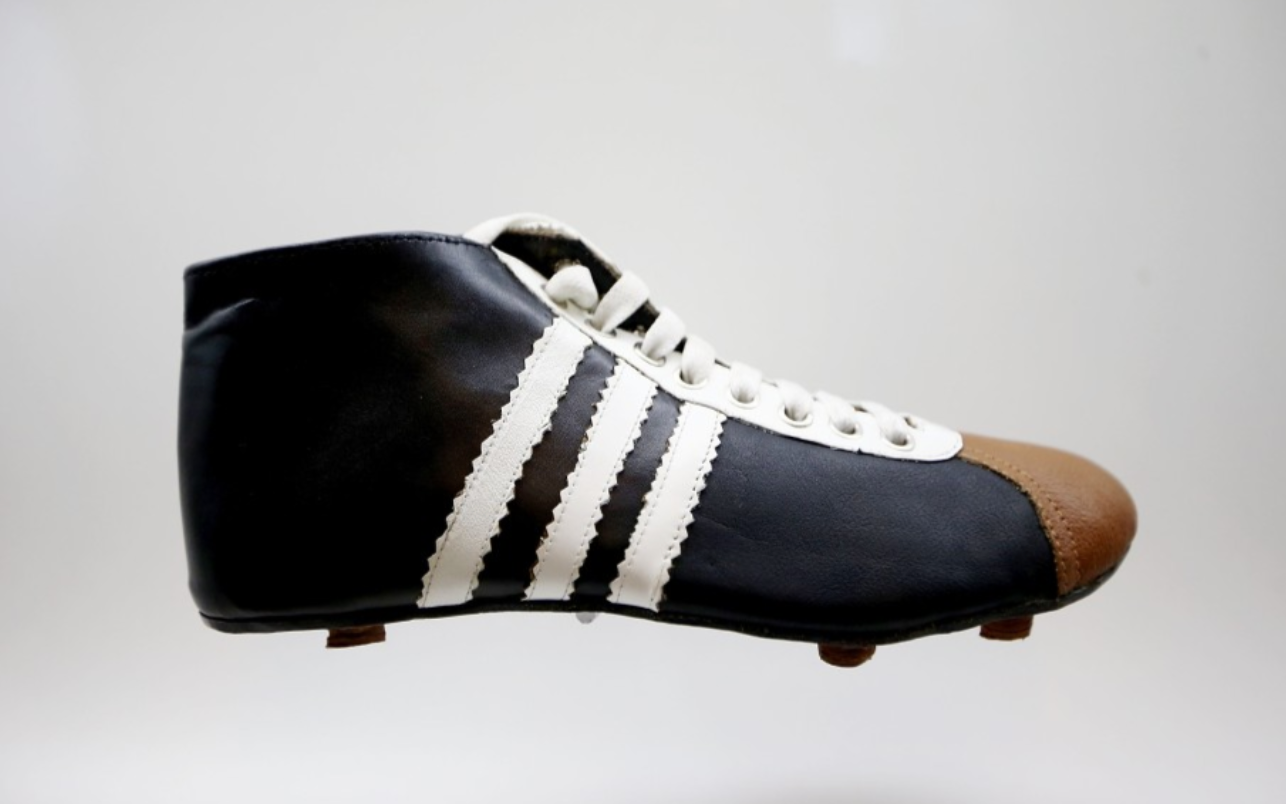
The 1950s and 60s
With the end of World War II, boot designs underwent a drastic transformation. They became lighter, more flexible, and focused on enhancing agility and kicking performance. During this period, we have witnessed the introduction of lower-top boots, offering increased flexibility to players.
The 1970s
Boots continued to shed weight, and colours debuted in the Seventies. Gone were the days of black-on-black monotony. Hummel, led by Marketing Director Brian Hewitt, spearheaded this colorful revolution by introducing white boots and various other shades. Everton's Alan Ball, wearing these revolutionary boots, dazzled the audience during the 1970 Charity Shield match, earning the nickname "twinkle toes."
The 1980s
The 1980s witnessed the birth of modern classics in the game. Boots like the Copa Mundial and Puma King stole the spotlight, featuring leather as the material of choice. Comfort and performance took center stage.
The 1990s
This era marked a significant shift as professional footballers signed endorsement deals with boot manufacturers. Adidas hit a home run with their iconic boot, the Predator, capturing the hearts of players worldwide. Nike also made its mark, with the Tiempo Premier gracing the feet of numerous athletes during the 1994 World Cup, including ten players in the final.
The 2000s
The new millennium brought advancements in boot technology, particularly in stud design. Soles became more flexible, granting players greater freedom of movement. Adidas Predators continued to dominate the field, while Nike's Mercurial gained recognition as a speed boot. Laser technology allowed fully customized boots, adding a personal touch to players' gear.
The 2010s
Customization and personalization became the norm for professionals and players at all game levels. Blades gained popularity over traditional studs signaling a shift in preferences. Brands capitalized on the success of professional endorsements during significant tournaments, reaching millions of viewers. Innovations such as chips and tracking in boots enabled players to monitor their performance online and via mobile devices. Collared boots and limited-edition releases became the talk of the town, with legendary players like Cristiano Ronaldo and Lionel Messi leading the charge.
The evolution of football boots didn't stop there. Technological advancements continued to reshape the landscape. Thin upper materials layered for enhanced performance, and soleplates, like the Nike Aerotrak and Adidas Carbitex Speedframe, became more responsive. Leather boots underwent reworks to achieve a narrow and thin profile, catering to those who craved speed. The market witnessed remakes of iconic boots from past decades, paying homage to the designs that left an indelible mark in history. While Nike and Adidas continued their duopoly, other brands such as Puma, New Balance, and Mizuno emerged as viable alternatives, catering to discerning boot enthusiasts.
Nice read:
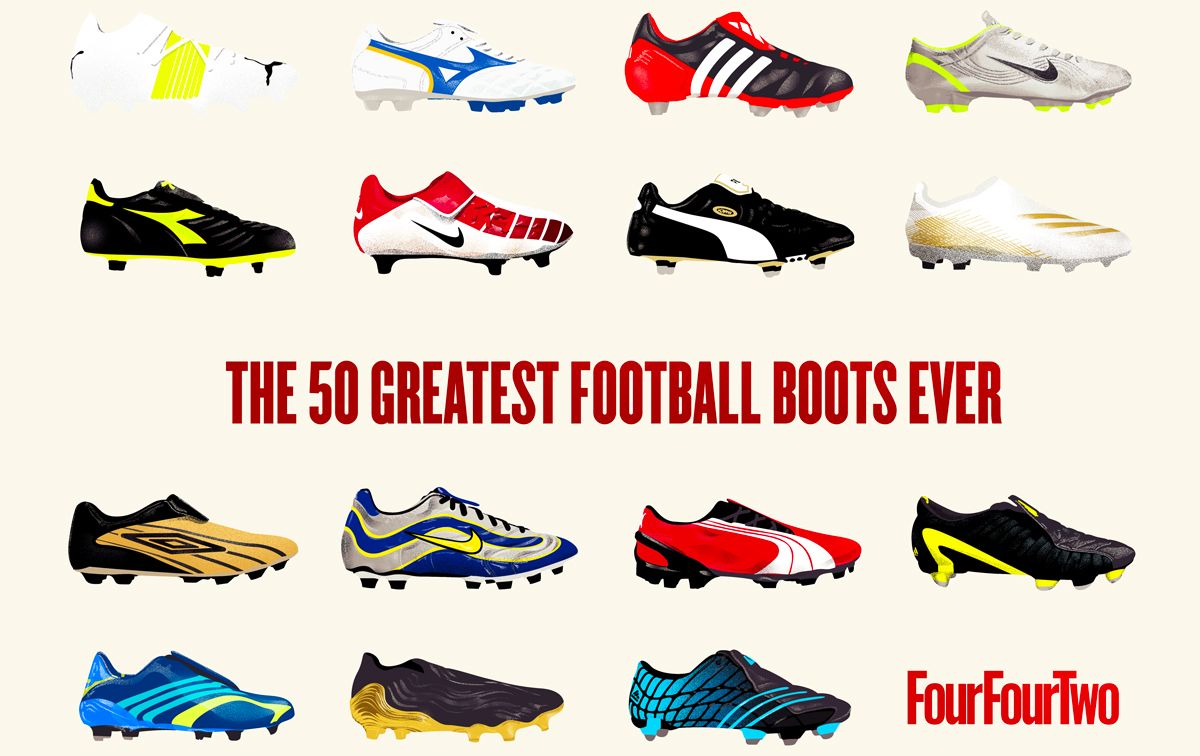
Another 6 of my favorite soccer boots
The advancement in boot technology has been game-changing, enabling athletes to reach their full potential and altering the sport's trajectory. I highlight six that made a difference (for me).
Adidas F50
Launched before Euro 2004, the Adidas F50 initially featured kangaroo leather uppers and a synthetic heel counter for reduced weight. But it wasn't until 2006, before the World Cup in Germany, that the F50.6 revolutionized the game. It became the first-ever boot that allowed complete customization, from the upper to the insole and studs. Its versatility, with various stud types for different conditions, empowered players to personalize their boots. Amateurs could feel like pros, and Lionel Messi sported the F50, paving the way for its popularity.
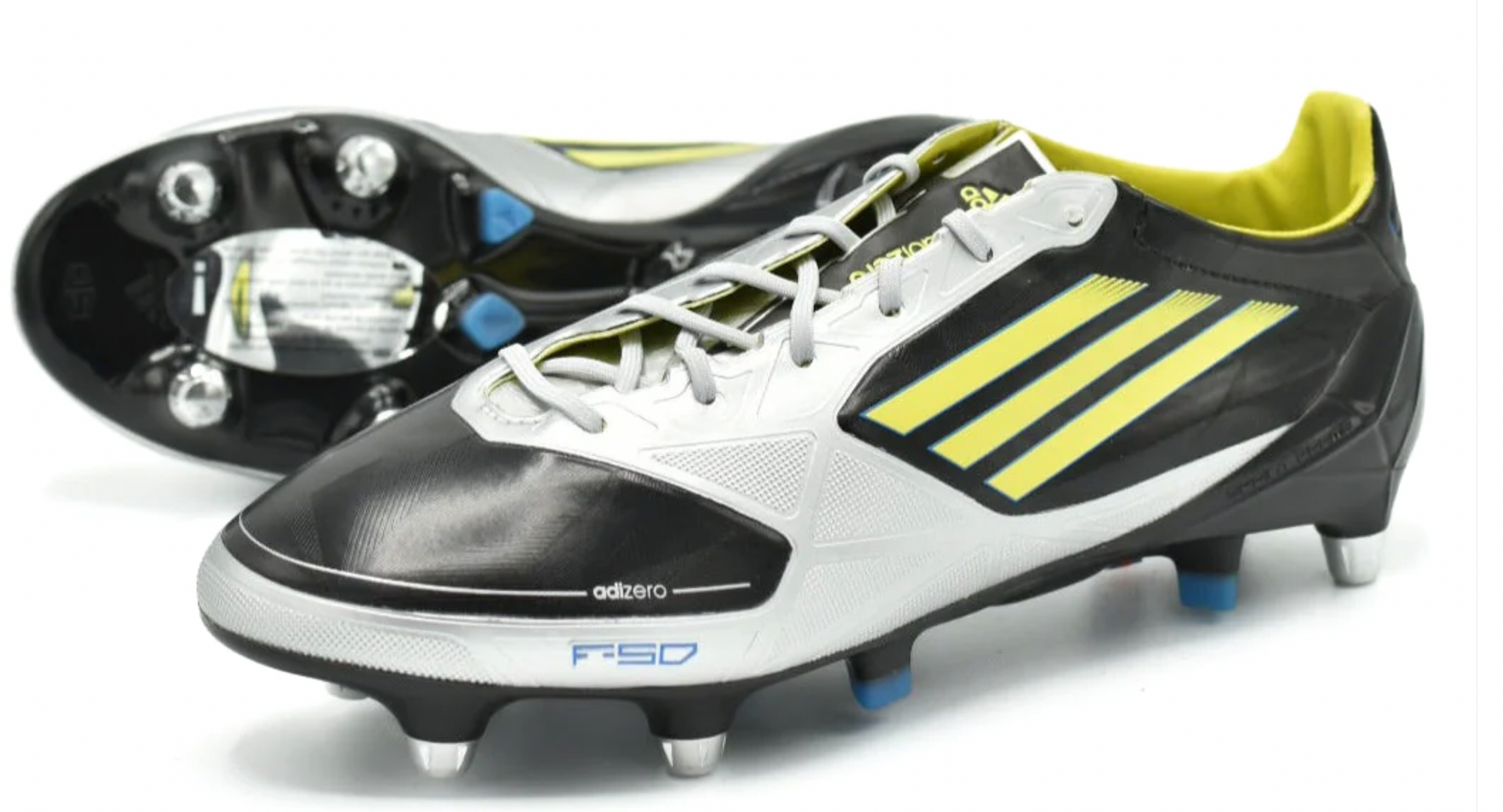
Hummel
The soccer world has witnessed a shift from traditional black boots to eye-catching, vibrant colors, and Hummel played a significant role in this transformation. One pivotal moment in this evolution was when Everton's Alan Ball, a standout player in the 1966 World Cup final, turned heads by donning the first-ever white boots by Hummel during the Charity Shield Final. However, there's an intriguing backstory to these boots.
Hummel had yet to produce a dedicated line of football boots. So, they ingeniously took a pair of Adidas boots and meticulously painted over them multiple times to achieve the desired aesthetic. Surprisingly, their unconventional approach paid off. When Hummel finally introduced thein boot design the following week, it sold an impressive 12,000 pairs. Hummel's innovative approach left an indelible mark.
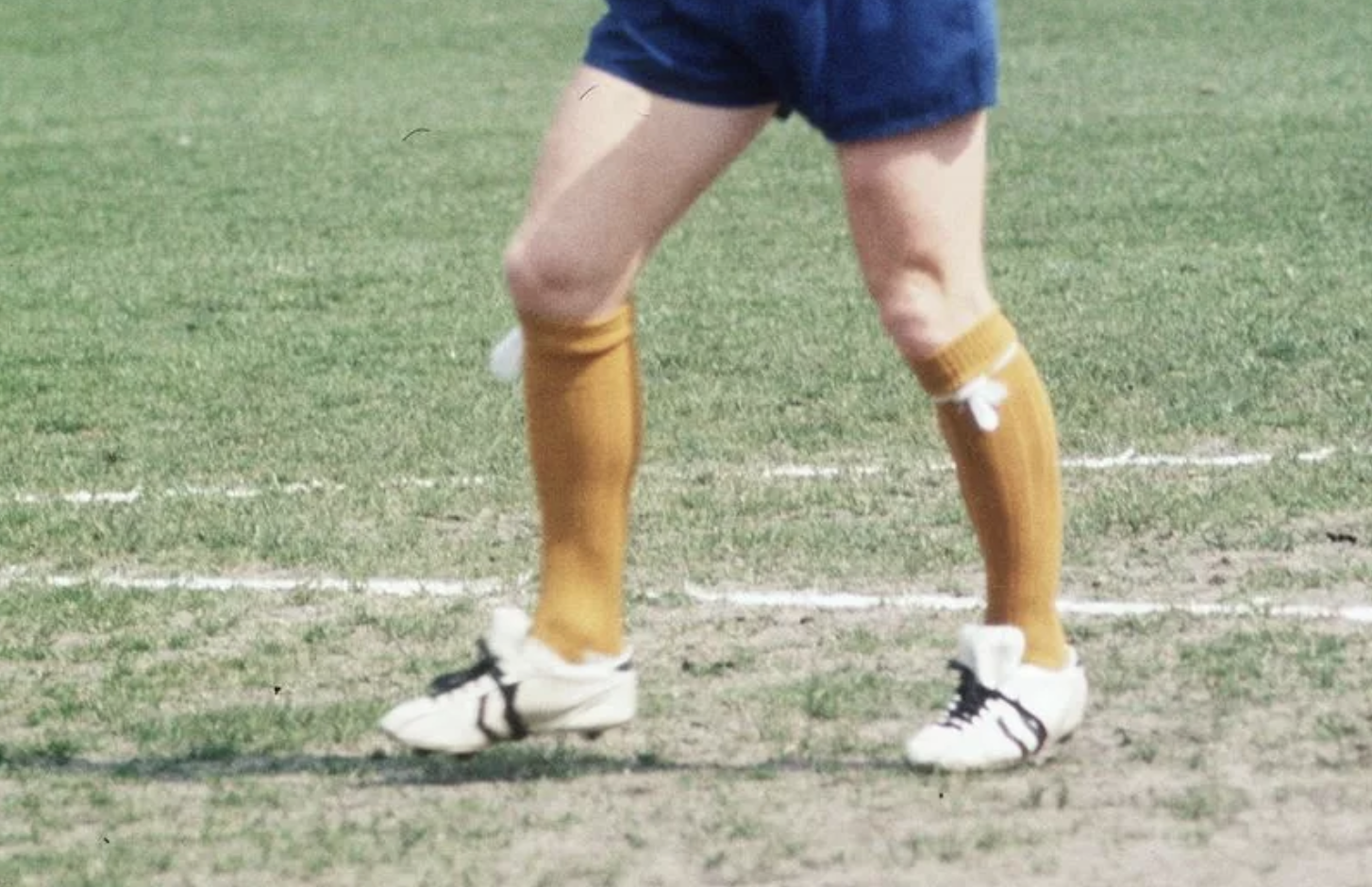
Nike Mercurial
In the realm of legendary football boots, the Nike Mercurial stands unrivaled. Its prestigious roster of athletes, featuring luminaries like Ronaldo and Kylian Mbappe, speaks volumes about its iconic status. Since its initial launch in 1998, the Mercurial has epitomized speed, power, and individual brilliance, drawing inspiration from Brazil's Ronaldo. The Mercurial has consistently pushed boundaries throughout its evolution, shedding weight and introducing innovative features. From the groundbreaking Mercurial Vapor to the cutting-edge Mercurial Dragonfly, each iteration continues to dominate the market across all game levels, from aspiring youth players to seasoned professionals.

Patrick "Keegan" Gold Cup
European football superstar Kevin Keegan made headlines when he inked a lucrative boot deal with the emerging Belgian sports brand Patrick following his move to Hamburg in Germany. The standout feature of Patrick's boots, the iconic "Keegan" Gold Cup with its distinctive two-strip design, quickly captivated the football world. Although Keegan's partnership with Patrick was short-lived due to the brand's departure from the football industry in the late 1980s, the enduring legacy of these boots remains intact. They left an indelible mark on the sport, adorning the feet of numerous aspiring footballers and etching their place in the annals of boot history.
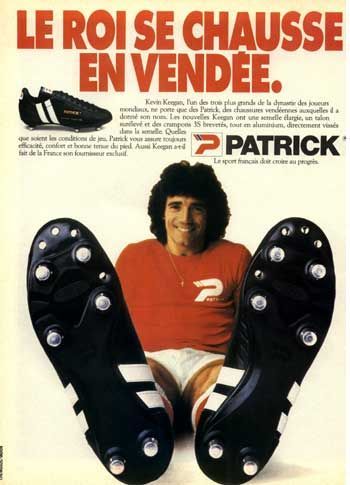
Pantofola d'Oro
The prestigious Italian luxury brand, founded in 1886, has dramatically impacted the soccer boot industry. While the boots may not be gracing the upcoming Euros and World Cup pitches, they appealed greatly in the '90s. Renowned players such as Roberto Mancini and Marco van Basten proudly sported their iconic white boots, igniting the dreams of aspiring footballers. Pantofola d'Oro brought Italian style and elegance, demonstrating that soccer boots could seamlessly blend functionality and fashion.
The shoes stood out for their unobtrusiveness: all black or all white. No stripes, no exorbitant branding. At most, three golden stars on the side. The story goes that Van Basten was not entirely happy with the fit and secretly played soccer in all-black Adidas shoes. I never got this confirmed, but I can imagine.
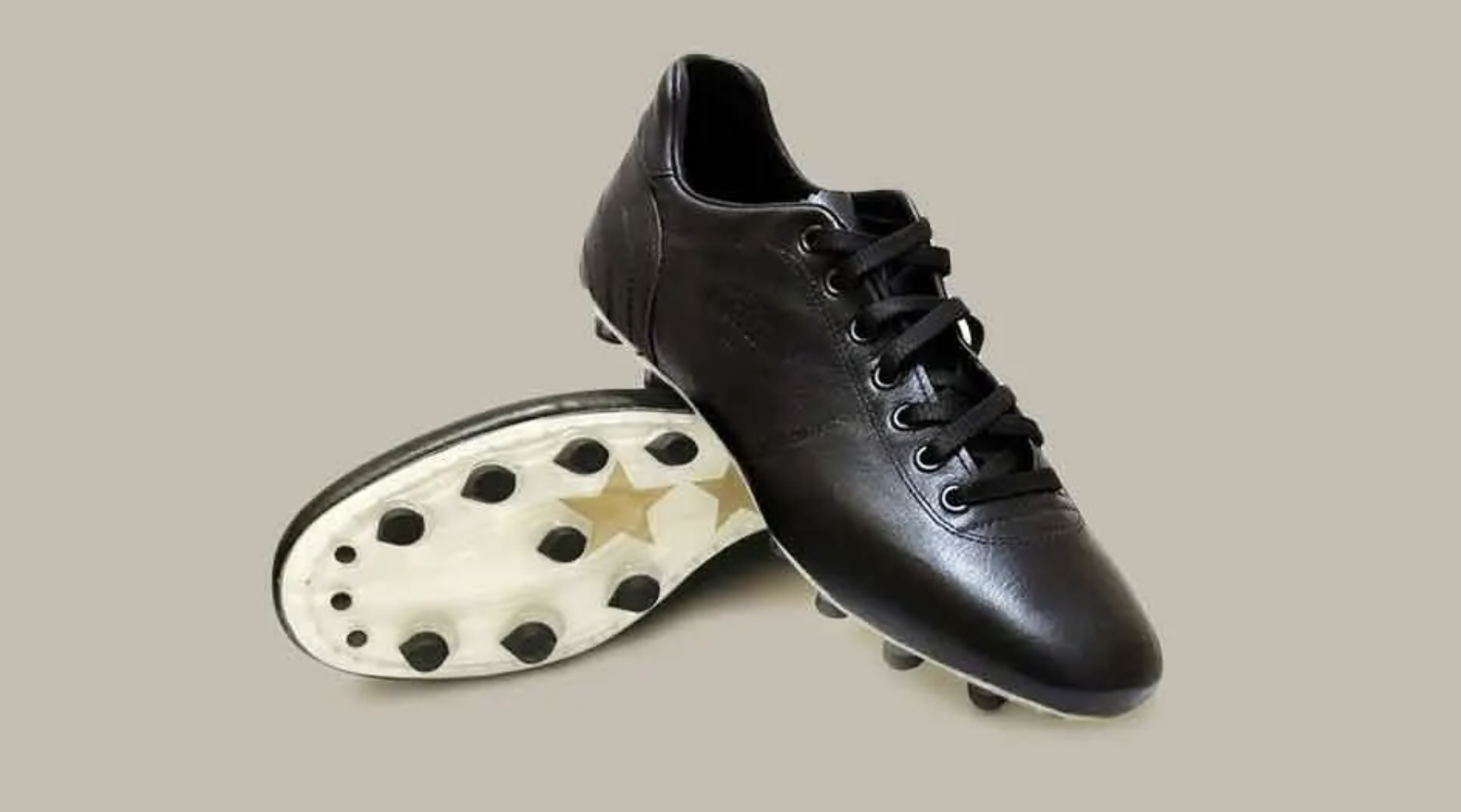
Puma King
The Puma King is the ultimate embodiment of comfort, timeless design, and functionality. This straightforward boot, adored by legendary players such as Pele and Eusebio, delivers dependable performance without sacrificing style. Its unwavering popularity has solidified it as one of the all-time most fantastic boots. Since its introduction at the 1974 World Cup, the Puma King has remained a symbol of excellence, seamlessly transitioning through the years with its association with contemporary icons like Neymar. It serves as a testament to its enduring quality and enduring legacy in the world of football.
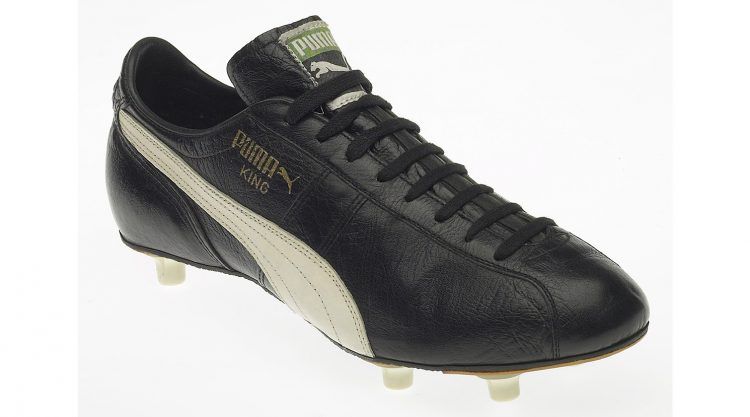
As we embrace the future, soccer boot technology shows no signs of slowing down. The pursuit of innovation remains relentless as the game's greatest stars strive for optimal performance on the pitch. Who knows what groundbreaking features and designs await us in the next chapter of football boot evolution?
The story of football boots is a testament to the ever-changing nature of the game, where style, performance, and technology converge. From kings to GOATs, these boots have played an integral role in shaping the history of football, uniting players and fans alike. So, the next time you lace up your shoes, take a moment to appreciate the legacy you carry with each stride and the exciting future.



